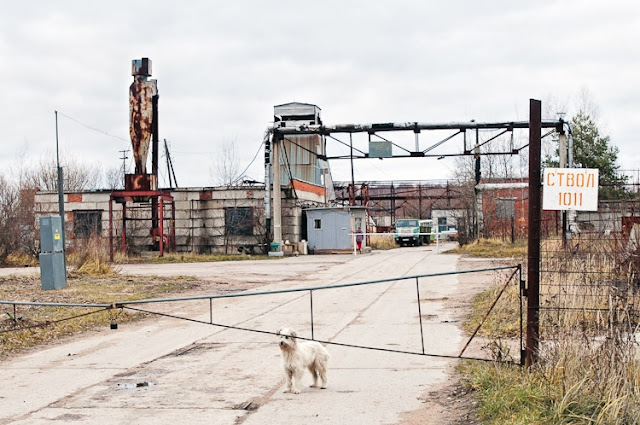The UNK Proton Accelerator. Image Source: English Russia via Dvice.
Caption for the above photo: Once upon a time in a Soviet Union far, far away, Russia set out to build the world's largest particle accelerator under a small town called Protvino. Already plagued by setbacks, the work on the accelerator ceased after the fall of the Soviet Union and it's been abandoned since.
Dvice is reporting on a set of incredible Urbex photos of an abandoned Soviet particle accelerator. It's amazing to see one of the foremost symbols of futuristic science of our current era reduced to an Urbex ruin. Will this be how future peoples see the wreckage of our research and our civilization? All photo sources are from the first cited sites for the image above. Also below is an excerpt from an article about an accident that took place at this site, in which a scientist was exposed to the accelerator while it was in full operation. This is the only such case in human history.
For more images, including above ground shots of the site, go here.
Anatoli Petrovich Bugorski (Анатолий Бугорский) (born 1942). Image Source: Randombutnice.
Boingboing recently ran a report on the only person to ever be physically exposed to a particle accelerator that was in full operation (another source is here). In 1978, Anatoli Bugorski was working at the above, now-ruined facility in Protvino when he accidentally stuck his head inside the collider when it was running. Wiki: "On July 13, 1978, Bugorski was checking a malfunctioning piece of equipment when an accident occurred due to failed safety mechanisms. Bugorski was leaning over the piece of equipment when he stuck his head in the part through which the proton beam was running. Reportedly, he saw a flash "brighter than a thousand suns", but did not feel any pain." When the proton beam collided with Bugorski, the collision apparently changed both Bugorski and the proton beam. Amazingly, he went on to complete his PhD, but the side of his head that was exposed to the proton beam was literally seared by radiation, paralyzed, and somehow, frozen in time.
From a 2007 feature on Wired:
Read all my posts on the Large Hadron Collider.When two protons collide in an accelerator, they are transformed into muons and other particles. One Russian physicist offers this analogy: it's like two Soviet Fiats colliding to produce a bus and a Mercedes Benz 600. That's the thing about high-energy physics: the total is different than the sum of its parts.
So it was in 1978 that when the proton beam entered Anatoli Bugorski's skull it measured about 200,000 rads, and when it exited, having collided with the inside of his head, it weighed in at about 300,000 rads. ... From what we know about radiation, about 500 to 600 rads is enough to kill a person (though we don't know of anyone else who has been exposed to radiation in the form of a proton beam moving at about the speed of sound). The left side of his face swollen beyond recognition, Bugorski was taken to a clinic in Moscow so that doctors could observe his death over the following two to three weeks.
Over the next few days, skin on the back of his head and on his face just next to his left nostril peeled away to reveal the path the beam had burned through the skin, the skull, and the brain tissue. The inside of his head continued to burn away: all the nerves on the left were gone in two years, paralyzing that side of his face. Still, not only did Bugorski not die, but he remained a normally functioning human being, capable even of continuing in science. For the first dozen years, the only real evidence that something had gone neurologically awry were occasional petit mal seizures; over the last few years Bugorski has also had six grand mals. The dividing line of his life goes down the middle of his face: the right side has aged, while the left froze 19 years ago. When he concentrates, he wrinkles only half his forehead. ...
For his part, now that his fate is no longer secret, he would like to make himself available to Western researchers, but he doesn't have the money to leave the science town of Protvino and go west. He thinks he would make a brilliant object of study for someone: "This is, in effect, an unintended test of proton warfare," he claims. More to the point, he believes, "I am being tested. The human capacity for survival is being tested."
Read all my posts on Quantum Physics.






































Awesome!
ReplyDelete